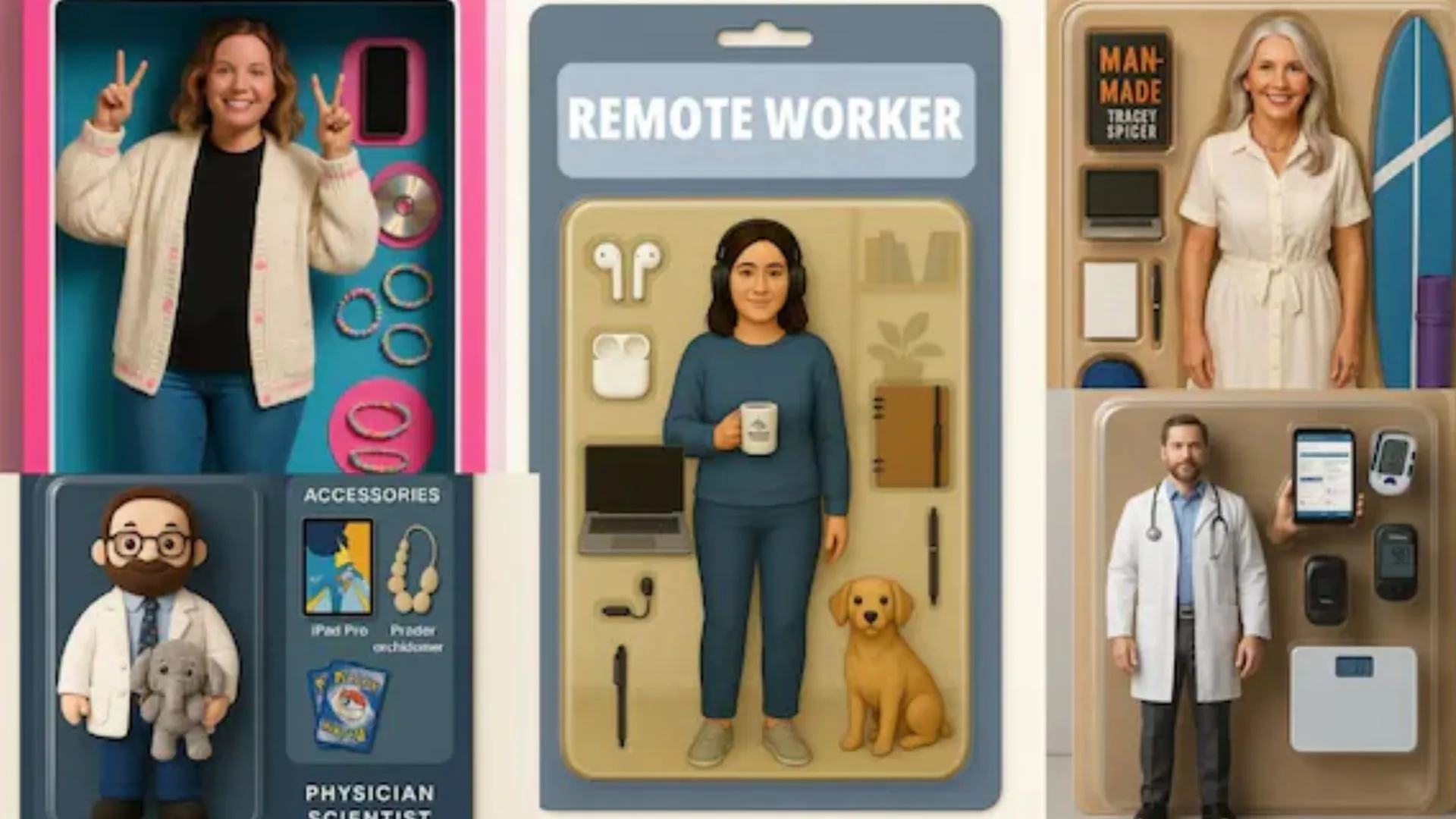The internet has embraced a fresh wave of AI fun. After Studio Ghibli-style portraits and Barbie-inspired filters went viral, users are now reimagining themselves as Barbie dolls. This new trend brings together nostalgia, AI creativity, and personal branding. It’s powered by ChatGPT’s image generation feature.
What the AI Barbie Trend Involves
In this trend, people turn their photos into lifelike Barbie-style action figures. The result looks like a plastic doll, complete with themed outfits, fun accessories, and a toy-store-style box. These images often copy the look of old-school Barbie packaging from the 1990s and 2000s.
Many users add personal touches. Some match the doll to their job, while others highlight hobbies or humor. You’ll see dolls with props like coffee mugs, pets, dumbbells, or laptops. The aim is to make each doll feel unique.
How Users Create Their Barbie Dolls
To join the trend, users must log in to ChatGPT and use the image generation tool. This feature works with GPT-4o and the right access. They upload a full-body, high-quality photo and give the AI a detailed prompt. The instructions usually include the person’s name, preferred accessories, and box design features.
After that, users refine the result by adjusting the prompt. They keep going until the AI creates a doll that fits their style and personality. It’s a creative and interactive process that many enjoy.
The Trend’s Growth Across Platforms
The trend first appeared on LinkedIn. Professionals shared action figure versions of themselves. These dolls often had office-related props like notepads or laptops. But soon, the look evolved into full Barbie-inspired makeovers.
Thanks to the Barbiecore fashion craze and the success of the Barbie movie, the trend exploded. The 2023 film starring Margot Robbie grossed over $1.4 billion globally. It brought Barbie style back into the spotlight. As one report noted, “The Barbiecore aesthetic’s lasting appeal is expanded upon by the most recent wave of AI art creation.”
Brands and Schools Jump In
Brands and institutions quickly embraced the trend. For example, during National Assistant Principals Week, Legacy – Glendale joined the fun. They posted, “During National Assistant Principals Week, Legacy – Glendale jumped on the #BarbieBoxChallenge trend to spotlight two of their very own limited edition leaders!”
Some beauty brands like Mac Cosmetics and NYX also used AI Barbie images in their marketing. While most celebrities haven’t joined, one U.S. politician did. Congresswoman Marjorie Taylor Greene posted her own version with the caption: “The Congresswoman MTG Starter Kit If I was a doll.”
Why Everyone’s Hooked
People love how this trend mixes technology with personal flair. It lets them show off their identity in a fun, creative way. It’s also highly shareable. Hashtags like #aibarbie and #BarbieBoxChallenge are trending across Instagram, X (formerly Twitter), TikTok, and Facebook.
The trend’s glossy look, mixed with humor and style, makes it appealing. Each AI doll tells a story—whether it’s about work, personality, or just having fun.
Blending Pop Culture and AI
In the end, the AI Barbie trend shows how fast AI is becoming part of pop culture. It turns a simple photo into a playful, personalized digital doll. And for many users, that’s both fun and empowering. As the trend continues to grow, it proves how technology can fuel self-expression in exciting new ways.









